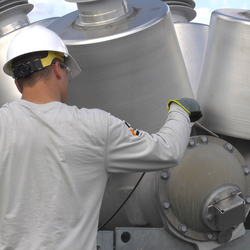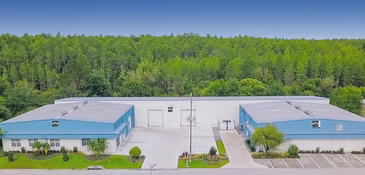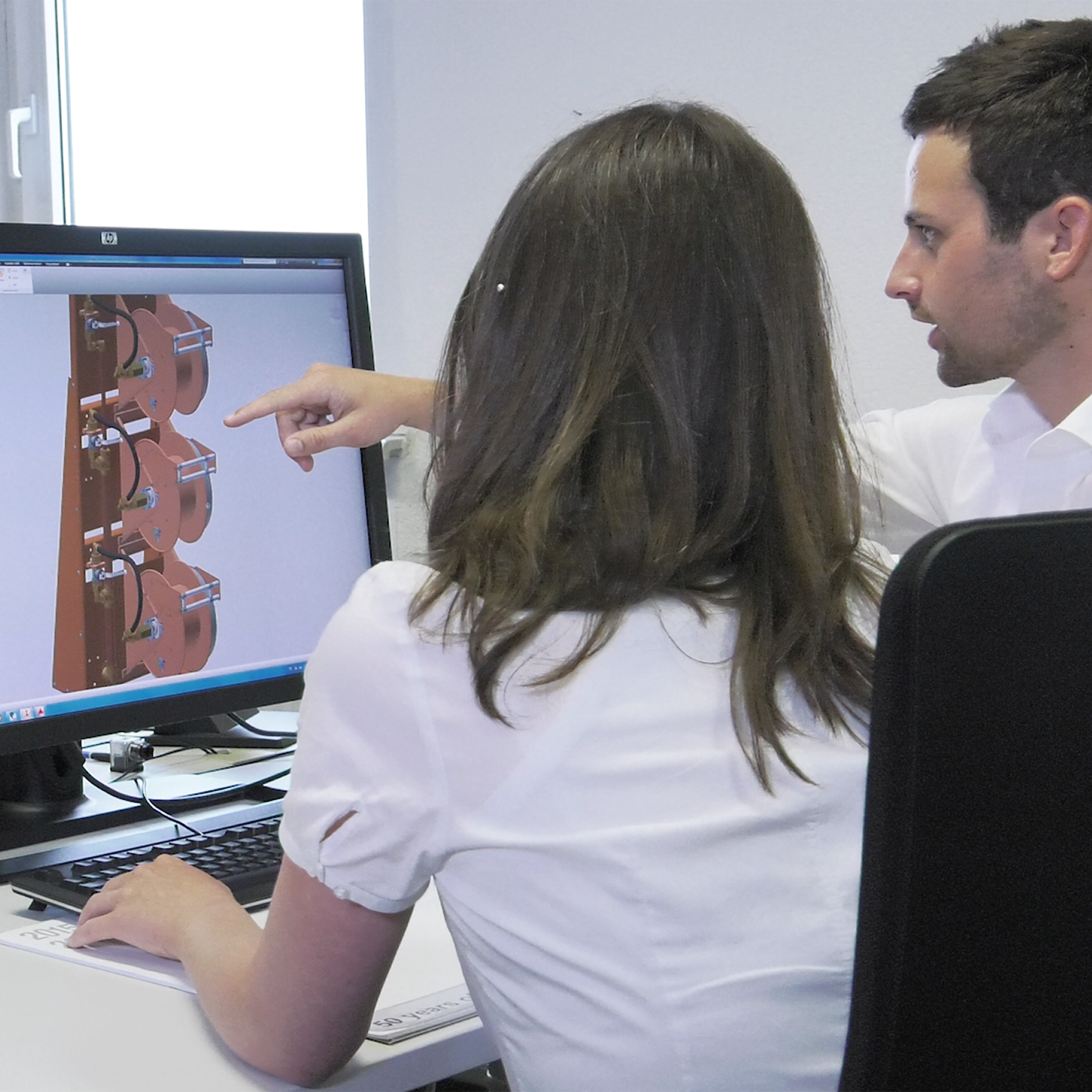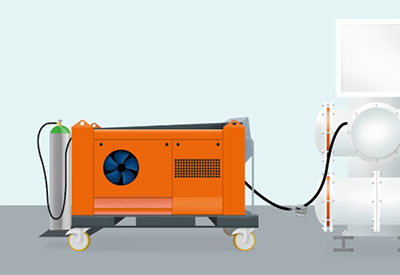SF6 Gas and It’s Environmental Impact
If you are reading this blog post, you are probably aware of the environmental impact of SF6 gas and why it’s important to avoid emissions. The annual global emissions of SF6 gas are equivalent to the yearly CO2 emissions produced by approximately 100 million cars. The bonds within the atoms of the SF6 molecule are extremely strong, and SF6 can withstand temperatures of more than 350oF before the bonds in its molecules break down.
Greenhouse gases are more effective than other gases at warming the planet by absorbing the sun’s heat instead of reflecting it back to the atmosphere. The Global Warming Potential (GWP) of a gas measures the amount of energy the emissions of 1 ton of that gas will absorb relative to 1 ton of CO2. Gases with a higher GWP contribute more significantly to climate change. According to the Environmental Protection Agency, the GWP for SF6 gas is 22,800 and SF6 remains in the atmosphere for 3,200 years. SF6 has the highest GWP of all greenhouse gases.
The extreme stability of the SF6 molecule, combined with the fact that its chemically inert, non-toxic in its pure state, non-flammable, and has very high density, make it an excellent di-electric gas for the electrical industry. SF6 has been in use in electrical switchgear and circuit breakers since the 1950’s. The industry is seeking alternatives to SF6 due to its high GWP; however, Federal regulations do not currently prohibit the purchase of new SF6 switchgear, and most states do not have their own regulations restricting SF6 gas. Additionally, alternative solutions often have a higher cost compared to SF6 switchgear.
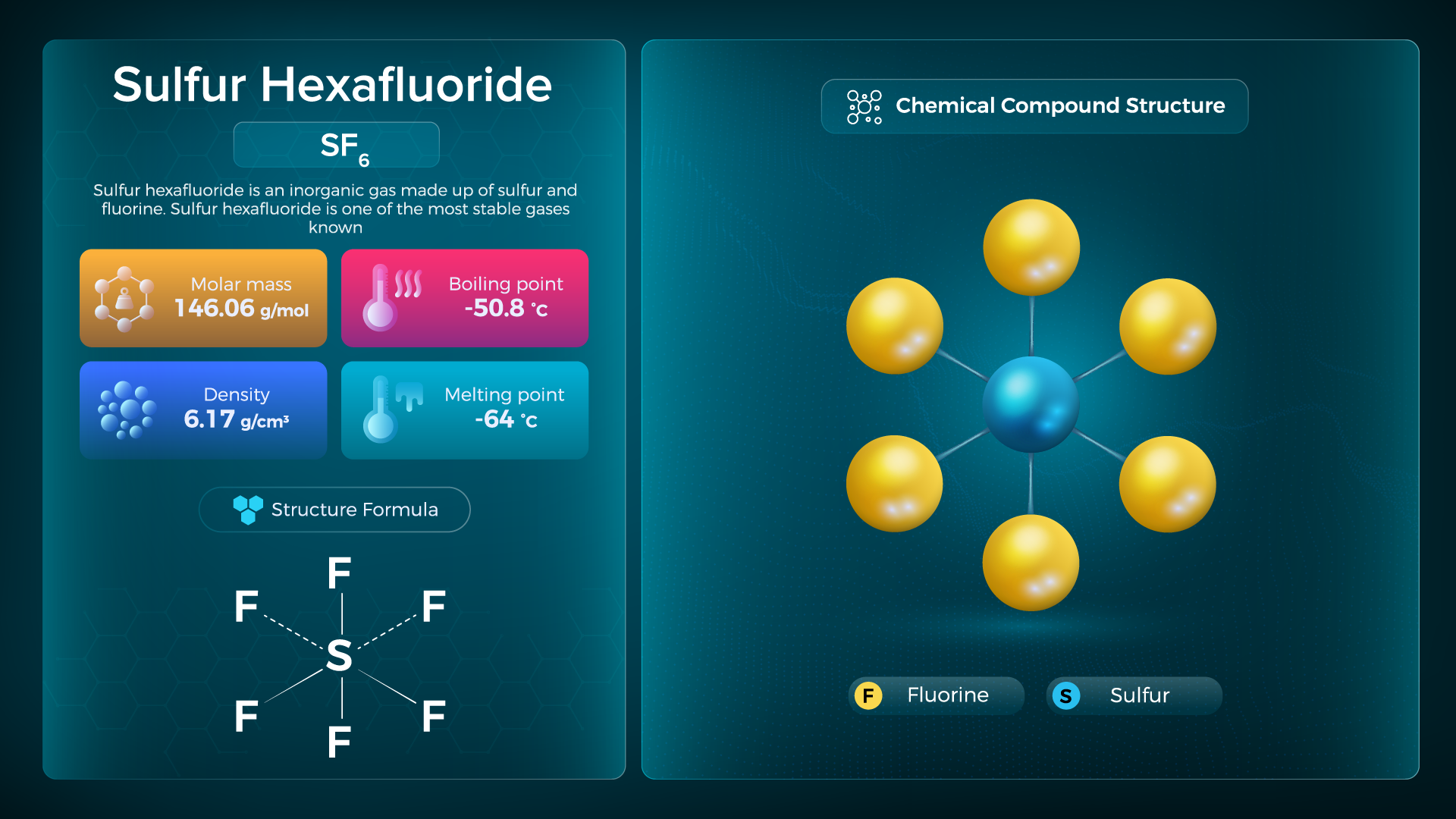
The global installed base of SF6 equipment is expected to grow by 75% by 2030, despite the availability of alternative solutions and data on how harmful SF6 emissions are to the environment. The Transmission and Distribution Industry is responsible for about 80% of SF6 emissions, but the good news is we can employ The Three Rs of Responsible SF6 Gas Handling to significantly reduce the industry’s environmental footprint.
Three R’s: Re-Use, Recover, and Recycle
Ideally, SF6 should be used in a closed-loop cycle and never be emitted into the atmosphere. Unfortunately, we know this is not always the case. The most common cause of emissions in the T&D Industry are as follows: production of virgin SF6 gas, faulty/leaking Gas Insulated Equipment (GIE), and improper gas handling methods/human Error. The Three Rs address these common emission causes and help to prevent SF6 from entering the atmosphere.

Re-Use (and Choose to Ditch Virgin SF6 Gas)
There are several reasons to avoid purchasing virgin SF6 gas and choosing to re-use SF6 instead. Virgin gas cannot be manufactured in North America and must be imported from Eastern Europe and Asia. Due to the current supply chain issues, virgin SF6 gas has never been more expensive or difficult to source. Meanwhile, there is a surplus of SF6 gas in North America that can be purchased for use in the T&D Industry.
SF6 gas sold for re-use, such as DILO Certified Gas, is a fraction of the cost of virgin gas. SF6 gas sold for re-use is reconditioned to meet or exceed IEC standards and is approved for use within the Transmission and Electrical Industry. This gas can be sourced quickly at a much lower cost than virgin gas and has an added benefit of being a better choice for the environment.
In short, producing virgin SF6 gas can create 12.5 or more times the emissions than reconditioning gas for re-use. We have an entire blog post dedicated to comparing emission rates of SF6 gas reconditioned for re-use to virgin SF6 gas, if you’d like to learn more.
Finally, choosing to re-use SF6 gas supports vendors in the United States. As you may know, DILO only sells DILO Certified Gas, which is SF6 gas that we recondition to meet or exceed IEEE standards. We do not promote the use of virgin SF6 as it contributes to the overall global emissions and goes against our company vision and motto: ONE VISION. ZERO EMISSIONS.
Recover Correctly
SF6 gas recovery refers to the process of capturing or removing gas from GIE via a recovery system. In addition to removing the gas from the GIE, the recovery system provides basic filtration of contaminants like moisture, SF6 gas by-products, and sometimes oil.
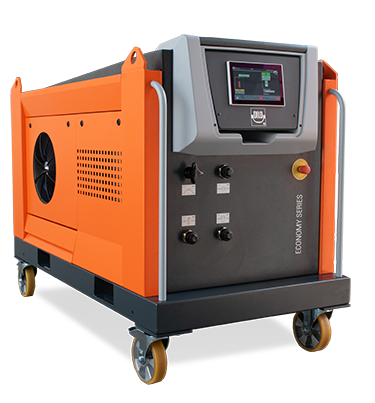
The most important things to keep in mind for SF6 Gas Recovery are:
- Determine Volume of SF6 Gas: It’s critical to determine the volume of SF6 gas to be recovered in order to select the correct tools and equipment and avoid emissions. The following formula can be used to determine the volume of SF6 gas: Volume (ft3) / density = lbs.

A SF6 density curve, like the one pictured above, can help you determine the density using the size of the GIE compartment and the ambient temperature. Next, use the density along with the volume of the GIE to determine the approximate pounds of SF6 gas to be recovered.
- Recover to Blank-Off Pressure: When completing SF6 recovery using a gas cart, it is imperative to reach the lowest level of vacuum possible, or “blank-off pressure.” Generally, reducing the amount of gas in a breaker to atmospheric pressure alone leaves a startling 14-18% of residual gas within the GIE. Starting additional maintenance while residual gas is still present can cause an emission.
For volumes under 100 lbs. of SF6 gas, the minimum blank-off pressure is <5 mbar. For volumes over 100 lbs. of SF6 gas, the minimum blank-off pressure is <1 mbar. Recovering to blank-off pressure removes virtually all the gas from the GIE and reduces emissions caused by residual gas being emitted into the atmosphere when GIE is opened for maintenance.
- Size Matters: It is extremely important that an adequately sized recovery system is used for the volume of SF6 gas that needs to be recovered. Hose length should be considered as well. This blog post can help you determine the volume of gas that needs to be recovered and select a proper recovery system based on that volume.
Recycle via On-Site Filtration
Contamination of SF6 gas can occur naturally over time, by leaks, and through arcing events.
Common contaminants found in SF6 gas include decomposition by-products, oil, and moisture. It’s important to test the quality of SF6 gas via a zero-emission analyzer prior to beginning any SF6 gas handling as certain contaminants like SF6 by-products can be hazardous to human health and damage equipment.
Depending on the quality and purity of SF6 gas, the gas can be recycled on-site. With the exception of Air, Nitrogen, CF4, and other vapors, most contaminants can be removed on-site using a recovery system and external pre-filters. This “recycling” allows contaminated SF6 gas to be processed on-site and quickly returned to your company’s inventory and/or be filled into GIE.
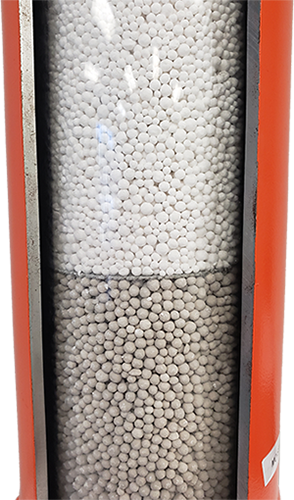
Four main types of filtration can be performed on-site to allow for SF6 recycling: Aluminum Oxide, Molecular Sieve Desiccant, Particle Filtration, and Activated Charcoal. The four types of filtration are briefly described below:
- Aluminum Oxide (AL2O3): Aluminum oxide absorbs moisture and SF6 by-product from SF6 gas by attracting and trapping the particles as the vapor passes through the filter.
- Molecular Sieve Desiccant: The desiccant traps water molecules and removes them from the SF6 gas as it passes through the filter.
- Particle Filter: The particle filter traps any solid particles in the SF6 gas as it passes through the filter. These particles may include solid decomposition material from SF6 gas by-products that would damage the GIE and gas handling equipment. Particle filters have a 100% capture rate of particles ≥1.0μm.
- Activated Charcoal: The high surface area of activated charcoal along with high bulk density and particle size distribution allow it to remove organic compounds such as oil from SF6 gas. The activated charcoal filter is not a standard part of a recovery system, but can be used externally if gas analysis shows that oil is present as a contaminant.
All DILO recovery systems include aluminum oxide, molecular sieve desiccant, and particle filters. DILO also recommends using a pre-filter to provide extra filtration to protect your recovery system from any contaminants are present in the gas. Using a pre-filter will also make the recycling process more efficient by providing extra filtration of the gas.
It may take multiple passes through the recovery system and pre-filter to recycle the gas to meet the IEC standards for re-use. If you are not seeing a significant improvement on gas quality after filtration, your filters may be saturated and will likely need to be cleaned or replaced. Please note that may require PPE and special handling processes that may require specific trainings or certifications (i.e. respirator program). If the IEC standard for re-use cannot be met or exceeded, your SF6 gas will have to be sent for reconditioning. This process is discussed below in more detail.
The Fourth R: Reconditioning of SF6 Gas
If contaminants cannot be filtered out on-site, SF6 gas may need to be reconditioned to remove vapors prior to being reintroduced to the supply stream. Reconditioning is a process that occurs after the Three Rs, which separates SF6 gas from other vapors (i.e., N2, O2, CF4). In short, reconditioning is a cryogenic process that is combined with filtration and high pressure through an emission free process. Note that mixing or diluting with virgin SF6 gas is not reconditioning and is not a global emissions reduction process.
There are limited suppliers in North America that can recondition SF6 gas which must meet the requirements and ensure zero emissions. The end goal is to meet or exceed the standards set by CIGRE, IEEE, ASTME and IEC for SF6 gas re-use.
DILO Direct can recondition your contaminated SF6 gas to exceed IEEE and IEC standards via our state-of-the-art separating plant. With one call, DILO Direct will make all necessary arrangements to have the gas picked up, reconditioned, and returned to your site in a like-new condition.
DILO Direct analyzes and inspects each cylinder of reconditioned gas and guarantee it to be:
- >99% SF6 purity
- <99.5 ppmV (-41.5⸰ dew point) moisture content
- Contain zero by-products
Sending your SF6 gas in for reconditioning is an economical option that is less than the cost of purchasing virgin gas and lowers your carbon footprint. It also eliminates the need for SF6 disposal of contaminated gas, further reducing your company’s environmental impact and cost.
Rethinking Gas Disposal
If you have contaminated SF6 gas at your facility that you would like to remove from your stockpile, consider DILO’s Direct’s environmentally friendly alternative to SF6 gas disposal. Instead of incinerating contaminated SF6 gas, which creates emissions, DILO Direct will recondition it and re-introduce it to the supply stream. Not only does this reduce emissions, it saves your company money and allows other companies in need of SF6 gas to purchase what you no longer need. When we receive the gas for disposal, your company will be provided with a report including the exact quantity received for end of year reporting purposed.
Do you have questions about SF6 gas recovery, recycling, reconditioning, or disposal? We can help! Contact us here.


